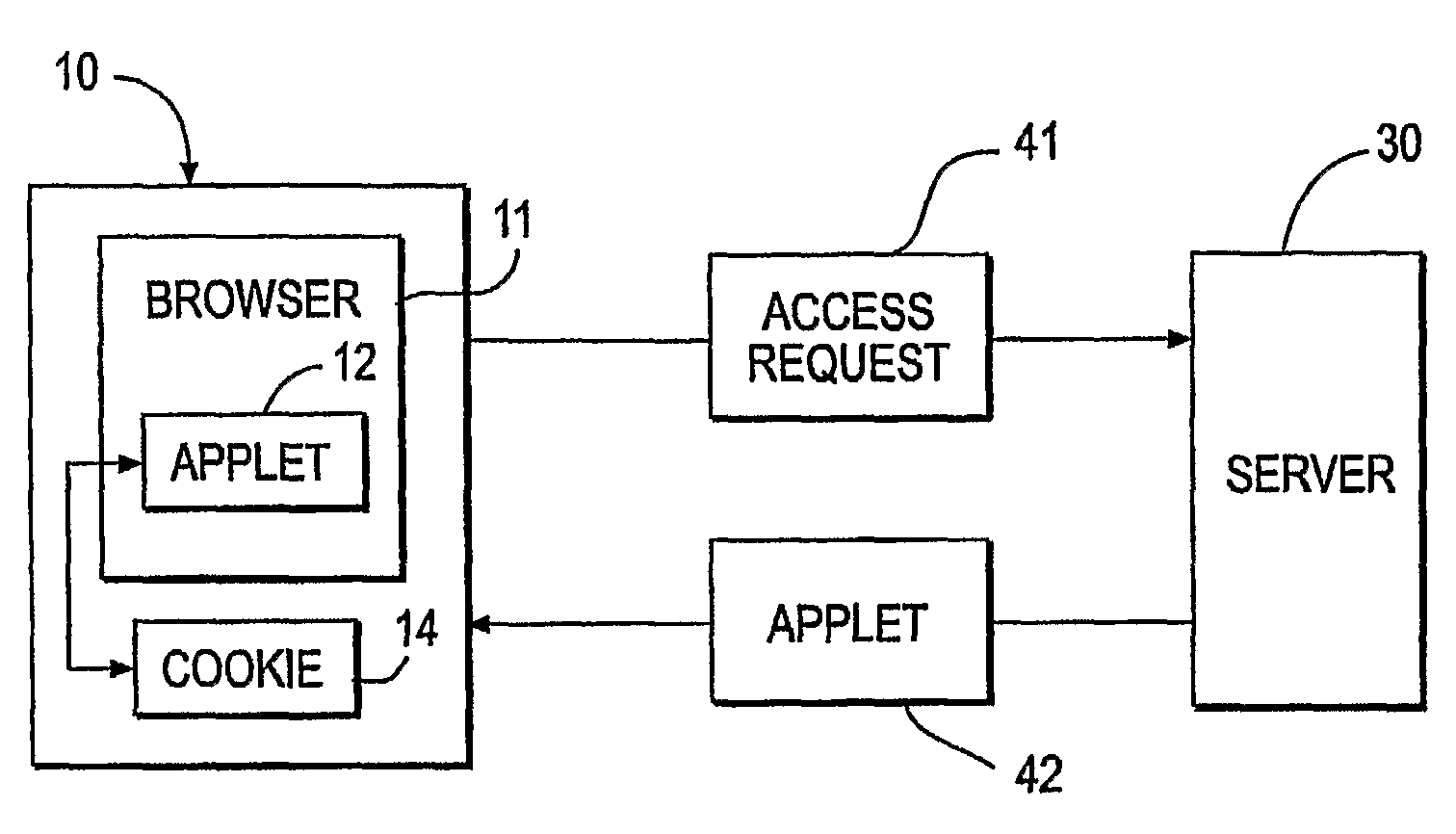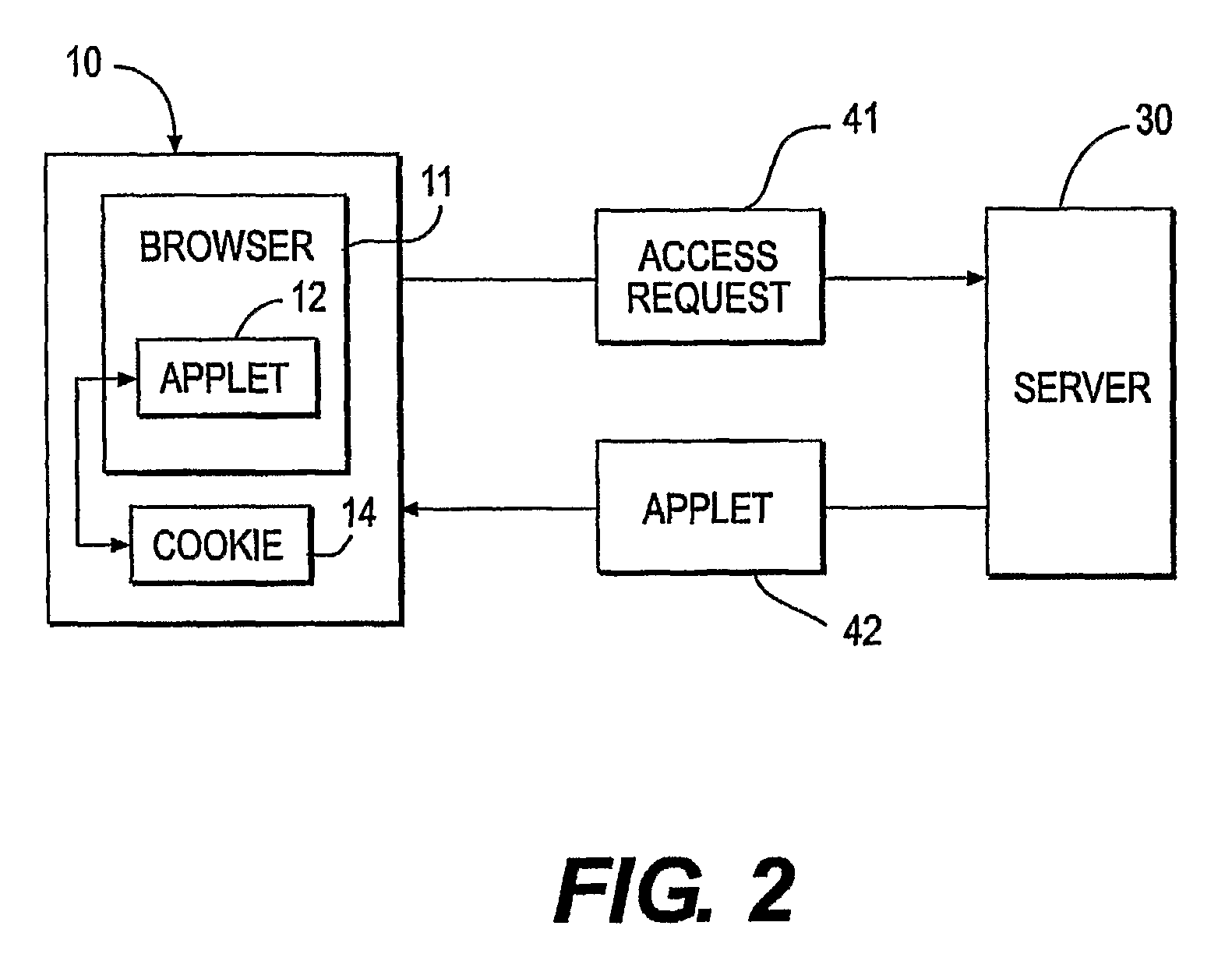Digipass for web-functional description
a technology of functional description and digipass, which is applied in the field of security improvement in computer networking, can solve the problems of limiting the mobility of users to a specific computer, increasing the cost of implementation, and lowering the security level of static password alone, so as to achieve cost-effective and high-security
- Summary
- Abstract
- Description
- Claims
- Application Information
AI Technical Summary
Benefits of technology
Problems solved by technology
Method used
Image
Examples
Embodiment Construction
[0075]DigiPass for Web includes five phases:[0076]a. Pre-registration (optional): The user and the server establish some shared historical secret.[0077]b. Registration Phase: The user registers with the server employing a PC.[0078]c. Activation Phase: The user's PC is activated by obtaining a shared authentication secret.[0079]d. Operational Phase: Using the shared authentication secret, the user's PC can generate dynamic passwords and / or dynamic signatures to authenticate the user and the transactions originated by the user, and[0080]e. Migration Phase: The user migrates to a different PC.
Pre-Registration Phase
[0081]In this phase the user and the server somehow establish some shared historical secret which will be used in the following phase when the DigiPass for Web PC (client) will be activated.
[0082]This phase is optional in DigiPass for Web. It is typically included if a higher level of security is required. The shared historical secret could be:[0083]a. An existing internet pa...
PUM
 Login to View More
Login to View More Abstract
Description
Claims
Application Information
 Login to View More
Login to View More - R&D
- Intellectual Property
- Life Sciences
- Materials
- Tech Scout
- Unparalleled Data Quality
- Higher Quality Content
- 60% Fewer Hallucinations
Browse by: Latest US Patents, China's latest patents, Technical Efficacy Thesaurus, Application Domain, Technology Topic, Popular Technical Reports.
© 2025 PatSnap. All rights reserved.Legal|Privacy policy|Modern Slavery Act Transparency Statement|Sitemap|About US| Contact US: help@patsnap.com



